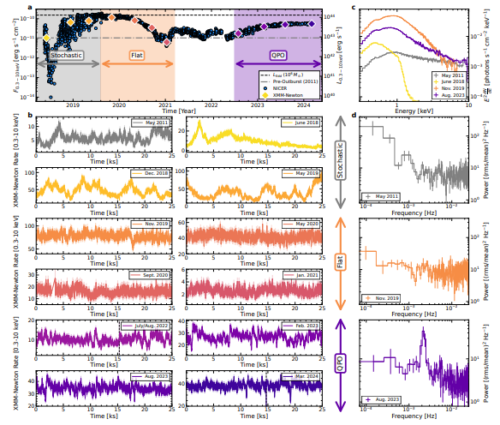2025-01-14 パシフィック・ノースウェスト国立研究所(PNNL)
<関連情報>
- https://www.pnnl.gov/publications/unraveling-doping-effects-structure-and-electronic-properties-perovskite-oxides
- https://pubs.acs.org/doi/10.1021/acs.nanolett.4c03660
エピタキシャルSrFe0.67Cr0.33O3-δ薄膜における層分解Cr酸化状態変調 Layer Resolved Cr Oxidation State Modulation in Epitaxial SrFe0.67Cr0.33O3−δ Thin Films
Krishna Prasad Koirala,Mohammad Delower Hossain,Le Wang*,Zengqing Zhuo,Wanli Yang,Mark E. Bowden,Steven R. Spurgeon,Chongmin Wang,Peter V. Sushko,Yingge Du
Nano Letters Published: October 31, 2024
DOI:https://doi.org/10.1021/acs.nanolett.4c03660
Abstract

Understanding how doping influences physicochemical properties of ABO3 perovskite oxides is critical for tailoring their functionalities. In this study, SrFe0.67Cr0.33O3−δ epitaxial thin films were used to examine the effects of Fe and Cr competition on structure and B-site cation oxidation states. The films exhibit a perovskite-like structure near the film/substrate interface, while a brownmillerite-like structure with horizontal oxygen vacancy channels predominates near the surface. Electron energy loss spectroscopy shows Fe remains Fe3+, while Cr varies from ∼Cr3+ (tetrahedral layers) to ∼Cr4+ (octahedral layers) within brownmillerite phases and becomes ∼Cr4.5+ in perovskite-like phases. Theoretical simulations indicate that Cr–O bond arrangements and the way oxygen vacancies interact with Cr and Fe drive Cr charge disproportionation. High-valent Cr cations introduce additional densities of states near the Fermi level, reducing the optical bandgap from ∼2.0 eV (SrFeO2.5) to ∼1.7 eV (SrFe0.67Cr0.33O3−δ). These findings offer insights into B-site cation doping in the perovskite oxide framework.



